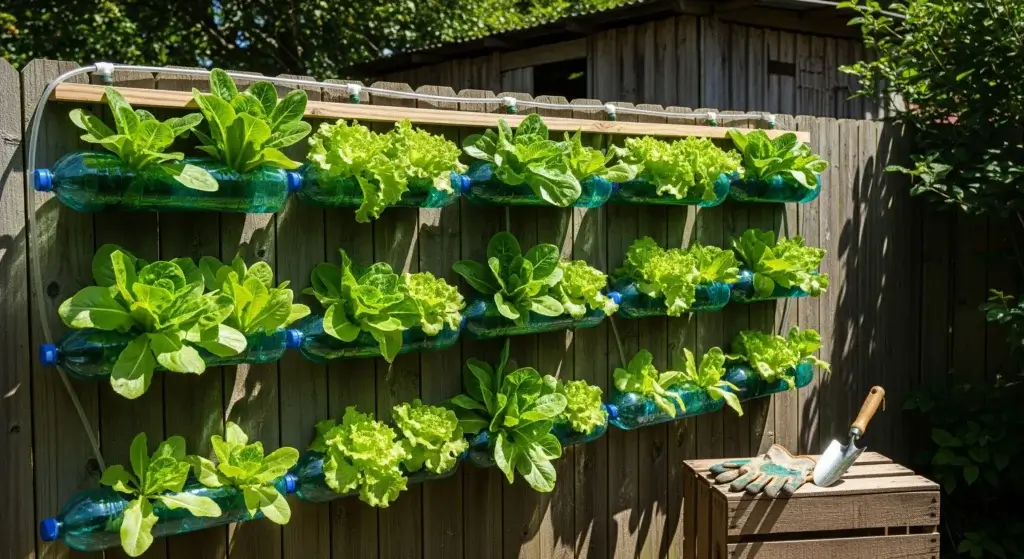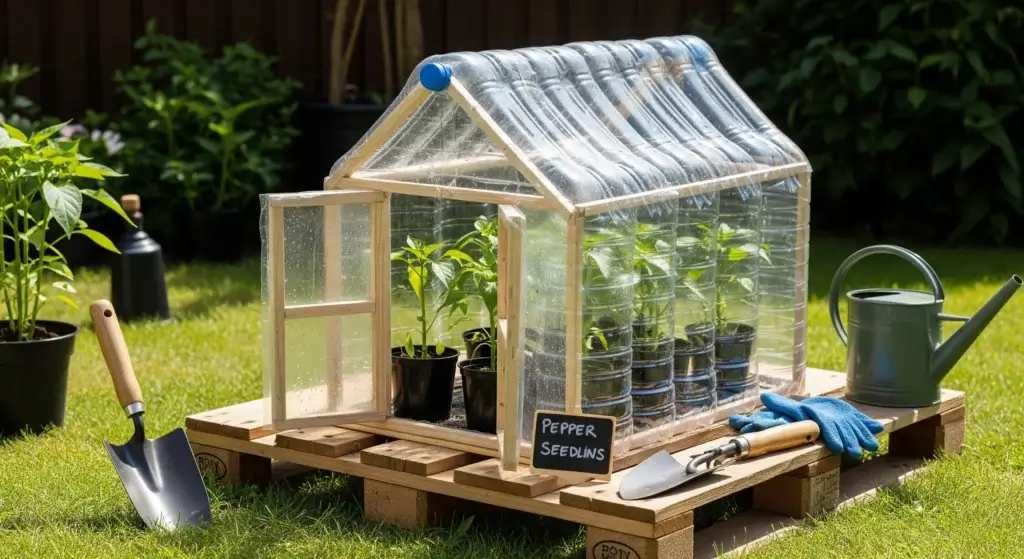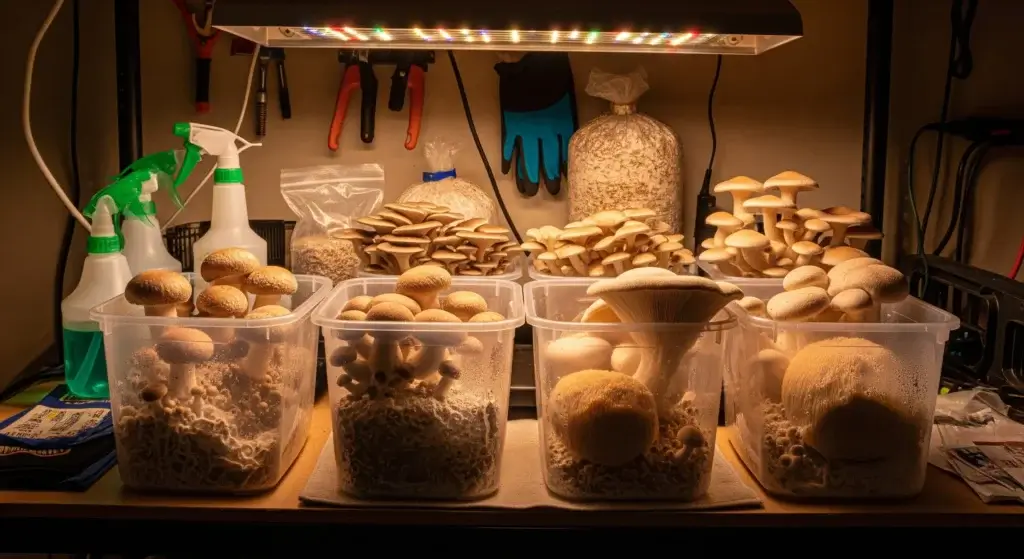
In the pursuit of ensuring ideal humidity conditions for your plants, particularly in the arid winter season, the significance of plant humidifiers becomes paramount.
This blog post aims to delve into the advantages of constructing your DIY plant humidifier.
Additionally, we will explore diverse techniques for crafting one, encompassing the pebble tray, wick system, and spray bottle methods.
The Benefits of a DIY Plant Humidifier
Cost-effective
Opting for a DIY plant humidifier presents a pocket-friendly alternative to purchasing commercial options.
This budget-conscious approach allows you to maintain optimal humidity for your plants without breaking the bank.
- Read also: DIY Plant Covers for Winter
- Read also: DIY Plant Pot From Clay
Customization
One of the key perks of a DIY plant humidifier lies in its adaptability to suit your specific needs and preferences.
Customize the humidifier to align with the requirements of your plants, ensuring a tailored and effective solution.
Aesthetically pleasing
Beyond functionality, DIY plant humidifiers offer the advantage of aesthetic integration.
Design your humidifier to seamlessly blend with your home decor, turning a functional device into a visually pleasing addition to your living space.
DIY Plant Humidifier Methods
Pebble tray

Materials
- Shallow tray
- Pebbles
- Water
Instructions
Select a shallow tray
Choose a tray with a shallow depth, ensuring it can comfortably accommodate the pebbles while allowing easy placement near your plants.
Fill with pebbles
Cover the base of the tray with a layer of pebbles. The pebbles act as a platform, preventing direct contact between the water and the plant’s roots.
Add water
Pour water into the tray, ensuring that the water level remains below the surface of the pebbles. This setup facilitates gradual evaporation, creating a humid microenvironment around the plant.
Benefits
Ease of implementation
The pebble tray method is straightforward and doesn’t require intricate steps. It’s an accessible option for those looking to enhance humidity without complicated setups.
Low-maintenance
Once set up, the pebble tray method demands minimal maintenance. Regularly check and refill the water as needed to sustain a consistent level of humidity around your plants.
Aesthetic appeal
Beyond functionality, the pebble tray method offers an aesthetically pleasing solution. The arrangement of pebbles in the tray can complement your indoor space, integrating seamlessly with your home decor.
Wick system

Materials
- Two containers
- Wick material (cotton rope, fabric strip)
- Water
Instructions
Container selection
Begin by choosing two containers – one for the water reservoir and the other for your plant pot. Ensure the containers are appropriately sized for the specific needs of your plants.
Wick system setup
Cut the wick material (cotton rope or fabric strip) to a suitable length, making sure it reaches from the water container to the top container with your plant. The wick serves as a conduit for water movement.
Connect the containers
Position the containers adjacent to each other. Immerse one end of the wick material in the water within the bottom container, allowing the other end to extend into the top container.
Fill the water reservoir
Pour water into the bottom container, creating a water reservoir. The wick draws water from the reservoir and transports it to the top container, creating a continuous, self-sustaining humidification system.
Top container setup
Fill the top container with pebbles or another suitable medium. Place your plant pot on top of the pebbles. As water evaporates from the pebbles, it increases humidity around the plant.
Benefits
Increased humidity efficiency
The Wick System proves to be more efficient in elevating humidity levels, making it an excellent choice for larger plants that require a consistent and heightened moisture environment.
Suitable for larger plants
This method is particularly well-suited for larger plants that demand a more substantial and sustained release of humidity. The wick’s continuous movement of water ensures a steady supply for optimal plant health.
Spray bottle method

Materials
- Spray bottle
- Water
Instructions
Selecting a spray bottle
Begin by choosing a clean and functional spray bottle. Ensure that it is free from any residue or chemicals to avoid unintended effects on your plants.
Water filling
Fill the spray bottle with water. Using distilled water can be beneficial, especially if your tap water contains high levels of minerals or chlorine, which may affect your plants.
Moderate misting
Approach misting with moderation. Aim to mist the foliage of your plants evenly, covering the leaves without drenching them. This measured approach prevents overwatering and minimizes the risk of creating conditions favorable for fungal growth.
Consideration for plant needs
Be mindful of your specific plant’s requirements. Some plants, particularly those native to tropical environments, may benefit from more frequent misting, while others may prefer less frequent applications. Researching your plant’s specific needs ensures a tailored approach.
Benefits
Quick and easy solution
The Spray Bottle Method offers a rapid and uncomplicated solution to provide a temporary boost in humidity. It is an ideal choice when you need to address immediate concerns or during dry spells when humidity levels drop.
Accessibility
This method is readily accessible, requiring only a spray bottle and water. It’s a convenient option for plant enthusiasts looking for a simple yet effective way to enhance the moisture around their plants.
Temporary humidity boost
While not a long-term solution, the Spray Bottle Method is effective for a temporary humidity boost. It’s particularly useful in situations where your plants may experience a sudden drop in humidity and need a quick response.
- Read also: DIY Potato Planter Box
- Read also: Homemade Plant Insect Spray for a Healthy Garden
Conclusion
DIY plant humidifiers are a cost-effective and customizable solution for maintaining optimal humidity levels for your plants.
Whether you choose the pebble tray, wick system, or spray bottle method, you can create a humidifier that fits your specific needs and preferences.
By following these simple methods, you can provide your plants with the humidity they need to thrive.



